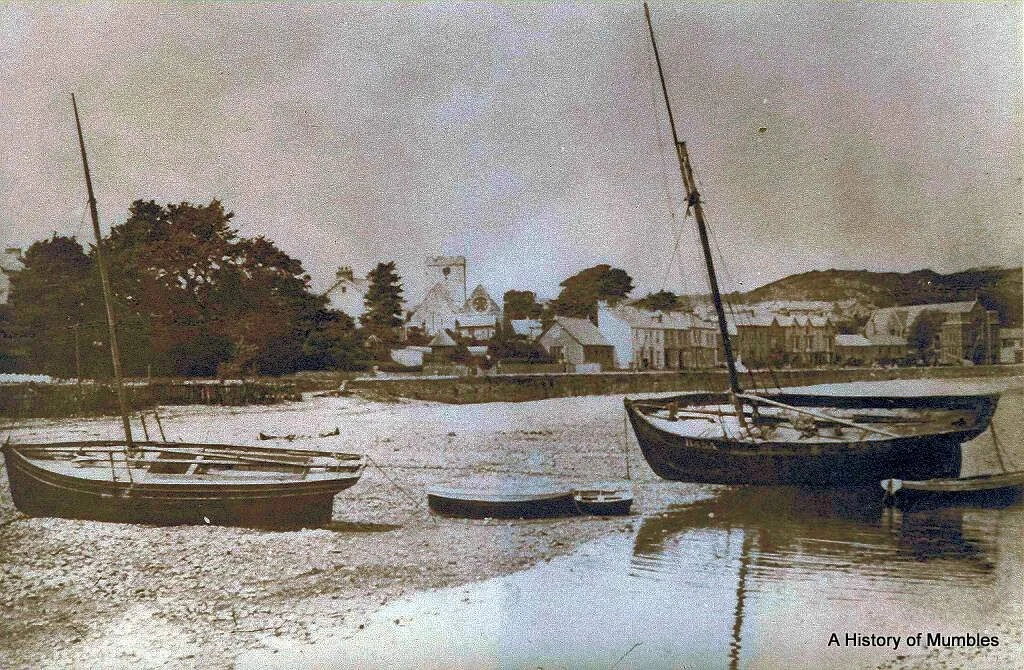Oystermouth Square, Mumbles
Oystermouth Square will always be associated with Mumbles Train. The Swansea and Mumbles Railway was the world's first tram service, using specially designed carriages on an existing tramline built for horse-drawn freight. From 1807, fare-paying passengers were transported on a line between Oystermouth, Mumbles, and Swansea Docks.
At low tide, it is sometimes possible to view the wrecks of oyster dredgers, or skiffs as they were known locally, can be seen on the beach. A Christadelphian Chapel near the square is Mumbles' oldest Chapel building. Peachey's livery stables were located where the garage is now, and on the corner of Newton Rd is the White Rose, which began as a private house a short distance away and had become a public house by the 1860s.
Oystermouth is made up of suburban housing that stretches from northwest to southeast. It is bounded to the east and south by the sea. Rams Tor and Mumbles Hill are two hills with little development. Mumbles Hill is now a council-managed protected nature reserve. The Mumbles community and the Oystermouth ward have distinct boundaries.
However, in the public's mind, the distinction between Oystermouth and Mumbles is blurred. Local buses to the area are labelled Oystermouth, despite the fact that most people in the area would say they live in Mumbles.
Whilst at Three Crosses
Brooke-Branwhite, Charles (1851 - 1923)
This painting depicts the beach at Oystermouth (the church can be seen in the left background), with two Mumbles oyster dredgers beached just above high tide. The track of the Oystermouth Tramway later renamed the Mumbles Railway, can still be seen. During the 1850s and 1860s, the railway gradually declined and almost fell out of use, but in the early 1870s, it was rebuilt and extended beyond the Oystermouth church. As is common when a railway track is rebuilt, the old rails are often left to one side, and it appears that the old rails were simply crow-barred over the wall and onto the foreshore.
Credits & References:
Amgueddfa Cymru - National Museum Wales
A History of Mumbles: https://sites.google.com/site/ahistoryofmumbles/home








